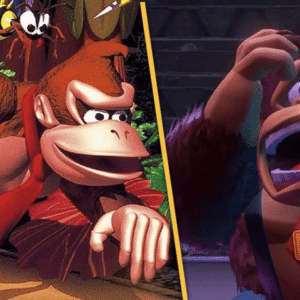Mark Millar has been one of the comic industry’s most debated writers. He became a star during the 2000s with his work for DC and Marvel before founding the Millarworld imprint. Known for pushing boundaries, Millar’s style has led some fans to abandon his works, citing excesses in stories like Nemesis and Big Game. However, not all of his indie comics fit this mold. The Jupiter’s Legacy series — particularly its first two installments and the prequel Jupiter’s Circle — offers a refreshing take on superhero tales.
Jupiter’s Legacy became known to many due to its short-lived Netflix adaptation. Yet, the original four-book series reveals a rich and mature superhero universe. Millar’s signature themes are used thoughtfully to create an engaging narrative that deserves more attention.
Jupiter’s Legacy Brought Forth an Amazing Superhero World

Jupiter’s Legacy marks the reunion of Millar and artist Frank Quitely, reviving the idea of superheroes as pop icons from their work on The Authority. It centers on the Sampson family, with Utopian and Lady Liberty leading since superheroes emerged in the 1920s. After finding an island that gifted them powers, they helped change human history. By Jupiter’s Legacy, a new generation prefers excitement over heroics, creating tension. Utopian’s daughter Chloe secretly romances Skyfox’s son, Hutch, while his son Brandon struggles under the weight of his legacy. Brainwave recruits Brandon for a nefarious plan, prompting Chloe and Hutch to resist.
The first two Jupiter’s Legacy volumes exemplify superb world-building. Readers are absorbed into an intricate superhero world, learning its mechanics page by page. While inspired by DC heroes, the tale captures Marvel’s relatability, with Quitely’s artwork complementing Millar’s narrative wonderfully. The result is a captivating superhero story that feels both familiar and novel, standing out in the genre’s rich history.
Jupiter’s Legacy delves deeper with Jupiter’s Circle. Collaborating with Chris Sprouse, Wilfredo Torres, and David Gianfelice, Millar explores the Golden and Silver Age origins within the Jupiter’s Legacy continuum. This prequel elaborates on the Union’s history, a fictional Justice League type group, showing their navigation of fame and fortune. It successfully injects the beloved classic superhero narrative with real-world issues, enriching the main storyline.
Though some Millar-edginess remains, Jupiter’s Legacy and Jupiter’s Circle maintain charm and respect for their roots, unlike his earlier works such as Wanted and Nemesis. While Millar’s approach may not resonate with everyone, these series capture his reverence for the genre, blending nostalgia with contemporary interests to identify a unique storytelling niche. Despite setbacks in his career, these books reveal Millar’s genuine superhero-writing capabilities.
Jupiter’s Legacy/Jupiter’s Circle Bridge Comics’ Evolution

Though deconstructing superheroes can sometimes feel repetitive, Jupiter’s Legacy/Jupiter’s Circle manages to maintain a charming allure while exploring this theme. By blending tributes to classic heroes and modern storytelling elements, it creates a compelling narrative.
However, Millar missed an opportunity with Jupiter’s Legacy‘s later stage. The concluding installment, Jupiter’s Legacy: Requiem/Finale, struggled with pauses and ultimately reverted to standard Millar trends. Despite this, Jupiter’s Legacy and Jupiter’s Circle beautifully showcase Millar’s potential beyond edgy tropes, providing readers with a merged and engaging look at superhero evolution.














